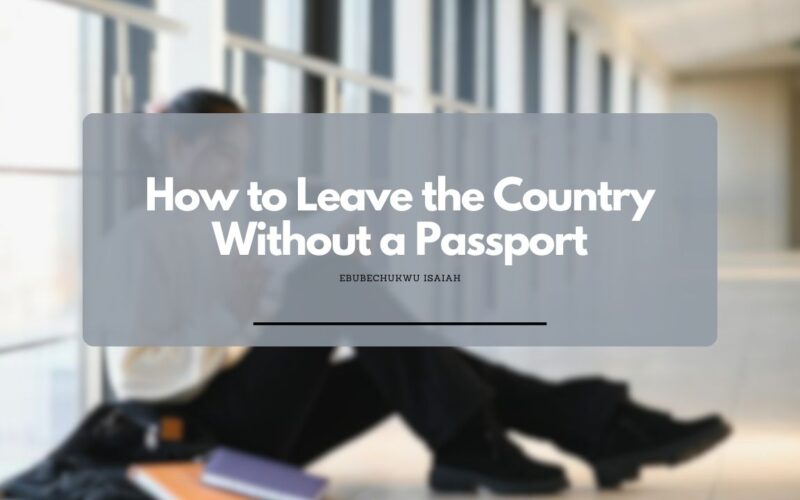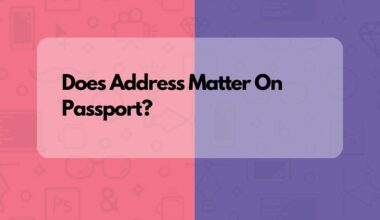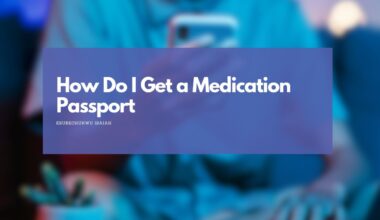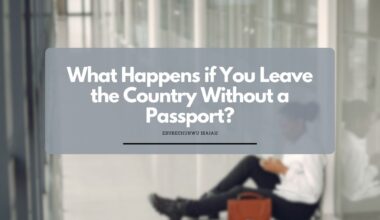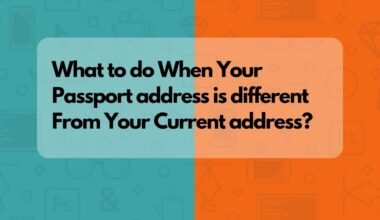As an Amazon Associate, I earn a small commission from qualifying purchases. Learn more about this.
So, you’re thinking about traveling but your passport is nowhere to be found.
What do you do?
As someone who loves to travel, I’ve asked this question too.
Let’s talk about what it really means to travel without a passport and if it’s even possible for regular folks like us.
How to Leave the Country Without a Passport – Some Honest Tips
Alright, let’s get into it.
Traveling without a passport sounds like a tricky situation, doesn’t it?
But surprisingly, there are ways it can be done.
Now, I’m not talking about sneaking across borders or doing anything risky. No, I’m here to share some legit ways you might be able to travel without that all-important passport.
You travel within certain regions.
Did you know that in some parts of the world, you can travel between countries without a passport?
Take Europe, for example. If you’re a citizen of a country in the European Union (EU), you can travel to other EU countries just with your national ID card.
I remember my trip to France from Germany; I just showed my ID card and voila, I was in another country!
But what if you’re not in the EU?
Well, there are other similar agreements in different parts of the world.
In Southeast Asia, some countries allow entry to their neighbors with just an ID card or a special pass.
For instance, the Mutual visa policy among ASEAN members, a group of South-East Asian countries with similar goals and interests.
It can be worth checking if your country has such agreements.
You’re in a Cruise
Some cruises don’t require you to have a passport if they start and end in the same country.
This is known as a ‘closed-loop’ cruise.
On my last Caribbean cruise, I met a family who had no passports.
They were U.S. citizens and the cruise started and ended in Miami.
They just needed their birth certificates and state IDs. But remember, this doesn’t work for all cruises, so check with the cruise line before you book.
Under Emergency situations
If you lose your passport or it gets stolen while you’re abroad, don’t panic.
You can usually get a temporary travel document from your country’s embassy or consulate. This document lets you return home.
I had a friend who lost her passport in Spain. She got an emergency travel document from the U.S. embassy, and she was back home in no time.
Young Travellers
For young travelers, especially kids under 16 traveling with a group, there are usually options.
In some cases, they can use a birth certificate and a consent form instead of a passport for short trips, like student trips or sports events.
This is more common for land and sea travel, not for flying.
So, what’s the bottom line?
While it’s always best to have a passport when you’re traveling internationally, there are certain situations where you can manage without one.
Just remember, rules can change, and it’s super important to check the latest travel regulations before you plan your trip.
Why It’s Best to Travel with a Passport:
Traveling with a passport is like having a universal ticket.
It’s the most accepted travel document worldwide.
When you have a passport, you’re telling the world, “Here I am, and here’s where I’m from.” It’s not just about following rules; it’s about making your travel hassle-free.
In many countries, it’s not just for crossing borders.
You often need it to check into hotels, rent a car, or even get a local SIM card for your phone.
It’s your proof of identity in places where no one knows you. Without it, simple tasks can become complicated.
Also, a passport gives you peace of mind.
You know that if things go wrong, you have a way to prove who you are.
This is important in emergencies, like losing your wallet or needing help from your embassy. It’s your safety net in unfamiliar places.
Getting a Passport:
Getting a passport may seem like a big task, but it’s quite straightforward.
The first step is to find out where you can apply.
Usually, this is a government office like a passport agency or post office. Sometimes, you can even start the process online.
For instance, in the US, there’s a proper resource on the government website on how to go about it. You could also just go directly to apply here.
Now regardless, when you apply for a passport, you’ll need some important documents.
These usually include proof of your identity (like a driver’s license) and proof of your citizenship (like a birth certificate).
You’ll also need a passport photo. This isn’t just any photo. It has specific requirements, like a plain background and a certain size.
It’s best to get this photo taken professionally to make sure it meets the guidelines.
Then comes filling out the application form. It asks for basic information about you – like your name, birth date, and address.
Be careful when filling this out. Mistakes can slow things down.
After your form is ready and your documents are gathered, you submit them, usually along with a fee.
Passport fees vary from country to country, but consider it an investment in years of travel.
Finally, you wait. Processing times can vary. It could be a few weeks or a couple of months.
